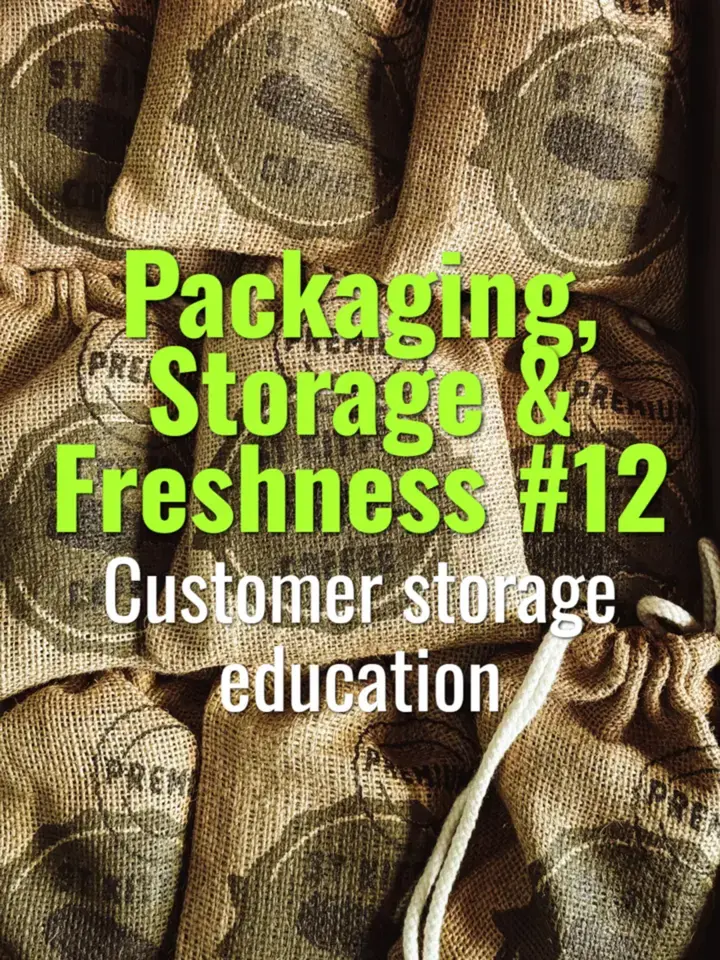Customer storage education
How to educate customers on best practices for storing coffee at home, ensuring freshness and a better drinking experience.
- Coffee Basics Nerds
- 1 min read
Article 12 of 12 in Packaging, Storage & Freshness/

Why Education Matters
- Even if roasters package coffee properly, improper home storage can quickly degrade quality.
- Educating consumers extends the coffee’s flavor life and builds trust in the brand.
Key Storage Principles for Customers
- Avoid Oxygen: Keep beans in airtight containers once opened.
- Keep Away from Light: Use opaque packaging or store in a cupboard.
- Stable Temperature: Avoid hot kitchens, windowsills, or refrigerators.
- Moisture Control: Never store coffee in humid areas or unsealed jars.
Whole Bean vs Ground
- Emphasize that whole beans stay fresh longer than pre-ground.
- Recommend grinding immediately before brewing for best flavor.
Freezer Guidance
- Freezer storage is acceptable if portioned and sealed airtight.
- Teach customers to thaw sealed portions before opening to avoid condensation.
Label Transparency
- Roast date vs best-before date: explain difference.
- Encourage brewing within 2–4 weeks of roast for peak flavor.
Communication Tools
- Use packaging space for simple tips.
- Provide QR codes linking to educational videos or guides.
- Train baristas/retail staff to answer storage questions.
Example Messaging for Consumers
- “Keep beans airtight, cool, and in the dark.”
- “Grind just before brewing.”
- “Use within a month of roast for peak flavor.”
Summary
Educating customers on proper storage—airtight, dark, cool, and dry—ensures they enjoy coffee at its best. Clear, simple communication builds customer satisfaction, brand loyalty, and better coffee experiences.